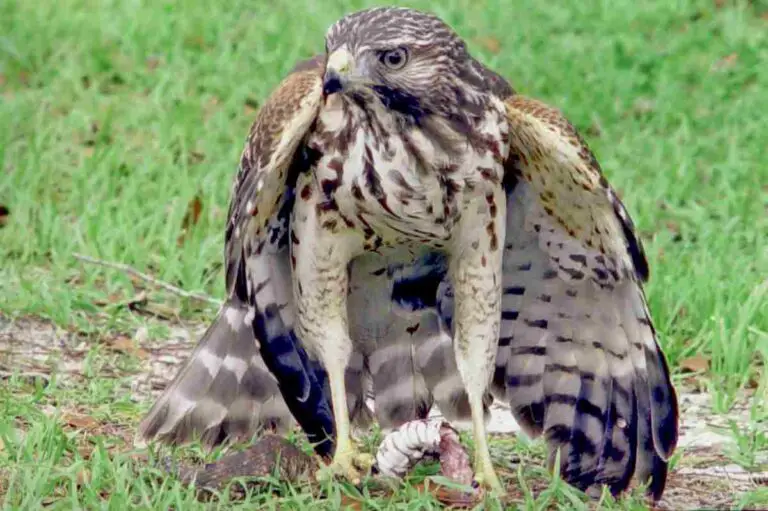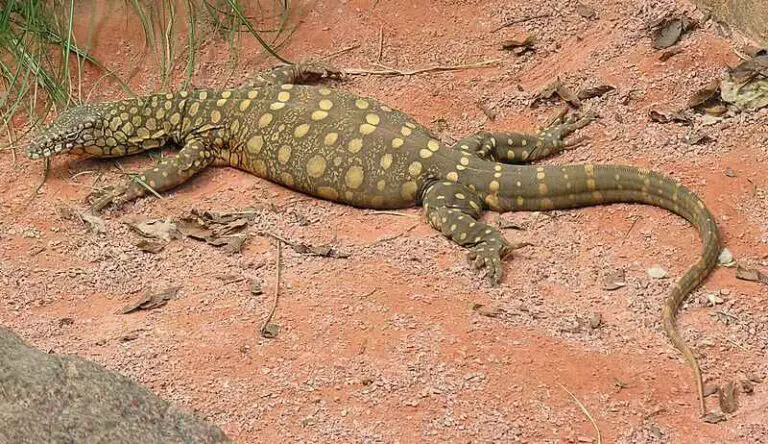Weasel Vs Stoat Size, Weight, Overall Comparison
A hypothetical confrontation between a weasel and a stoat, two members of the Mustelidae family that share similarities but have distinct differences, provides an interesting scenario. Both weasels and stoats belong to the Mustelidae family, and while they share common characteristics, specific variations set them apart. This analysis explores their size, weight, and other differences to speculate on the likely victor in a one-on-one encounter.
Weasel vs Stoat: Assessing the Likely Victor in a Confrontation
In a hypothetical scenario involving a weasel and a stoat, the stoat is likely to emerge victorious in a fight due to its larger size, longer tail, and potentially superior weight. While both animals share genetic similarities, the stoat’s physical advantages may provide it with a decisive edge in overcoming the weasel in a confrontation.
I). Size and Weight Difference:
– Stoats are generally larger than weasels, possessing a longer body and tail. This difference in size and weight can be a critical factor in determining the outcome of a physical confrontation, as the stoat may have a physical advantage over the weasel.

II). Longer Tail:
– Stoats are characterized by a longer tail compared to weasels. The longer tail may serve various purposes, including balance and agility, potentially giving the stoat additional advantages in maneuvering during a confrontation.
III). Potential Superior Weight:
– The larger size of the stoat may correspond to a potentially superior weight compared to the weasel. This added mass can contribute to the stoat’s ability to control the dynamics of the confrontation, potentially allowing it to overpower the weasel.
IV). Overall Dynamics:
– In this hypothetical scenario, the stoat is likely to prevail in a fight against a weasel due to its larger size, longer tail, and potentially superior weight. While both animals belong to the Mustelidae family and share common characteristics, the stoat’s physical advantages may provide it with a decisive edge in securing victory in the confrontation.
*Details of Comparison
| Criteria | Weasel | Stoat |
| Taxonomy | Mustelidae, Genus: Mustela, Various Species |
Mustelidae, Genus: Mustela, Species: M. erminea
|
| Appearance | Slender, various fur colors |
Slender, seasonal color changes (white in winter)
|
| Size | Generally smaller | Generally larger |
| Weight | 1-8 ounces | 2-16 ounces |
| Bite Force (PSI) | 120-450 PSI | 120-450 PSI |
| Physical Offensive Adv. | Agile, sharp claws and teeth |
Agile, sharp claws and teeth
|
| Physical Defensive Adv. | Relies on evasion |
Displays defensive behaviors when threatened
|
| Speed | Up to 12 mph (19 km/h) |
Up to 15 mph (24 km/h)
|
| Agility | Highly agile | Extremely agile |
| Overall Physical Capacity | Well-balanced agility, speed, and offense |
Robust physical capacity, agility, and hunting
|
| Habitat Preference(s) | Adaptable to various habitats |
Adaptable to diverse environments
|
| Tracks | Small, delicate with claw marks |
Slender tracks with noticeable claw imprints
|
| Lifespan | 1-2 years |
Up to 6 years (favorable conditions)
|
| Mode of Feeding | Carnivorous, preys on small mammals, birds |
Carnivorous, preys on rodents, rabbits, birds
|
| Intelligence | Displays intelligence in hunting strategies |
Exhibits problem-solving skills
|
| Social Behavior | Generally solitary, limited social interactions |
Solitary and social behaviors, especially during breeding
|
| Mode of Reproduction | Gives birth to 4-6 kits after short gestation |
Delayed implantation, longer gestation, 6-12 kits
|
| Parental Behavior | Limited parental care |
Extended parental care
|
| Proximity to Human Areas | Adaptable to human-altered landscapes |
Found in various environments, including agricultural areas
|
| Behavior Toward Humans | Generally avoids direct interaction |
Can display defensive behaviors if approached
|
| Danger Posed to Humans | Minimal danger under normal circumstances |
Minimal danger, potential bites if threatened
|
| Associated Precautions | Secure food sources, avoid handling |
Similar precautions apply
|
| Conservation Status | Varies, some species least concern |
Varies globally, some populations face threats
|
| Conclusion – Similarities |
Mustelidae family, Mustela genus, carnivorous diet, agility, physical characteristics
|
|
| Conclusion – Differences |
Size, lifespan, social behavior, parental care, reproductive strategy, fur color changes (stoat)
|
Key Points
- Weasels and stoats share the Mustelidae family and Mustela genus.
- Stoats are generally larger with a more extended lifespan.
- Both exhibit robust physical capacities and adaptability to diverse environments.
- Stoats may display more social behavior and extended parental care.
- Weasels and stoats pose minimal danger to humans under normal circumstances.
- Conservation statuses vary among species, with some facing threats.
- Stoats undergo seasonal color changes, adapting to their surroundings.
1. Taxonomy
Weasel:
Family: Mustelidae
Genus: Mustela
Species: Various species, e.g., Mustela nivalis (least weasel)
Stoat:
Family: Mustelidae
Genus: Mustela
Species: Mustela erminea (short-tailed weasel or ermine)
2. Appearance
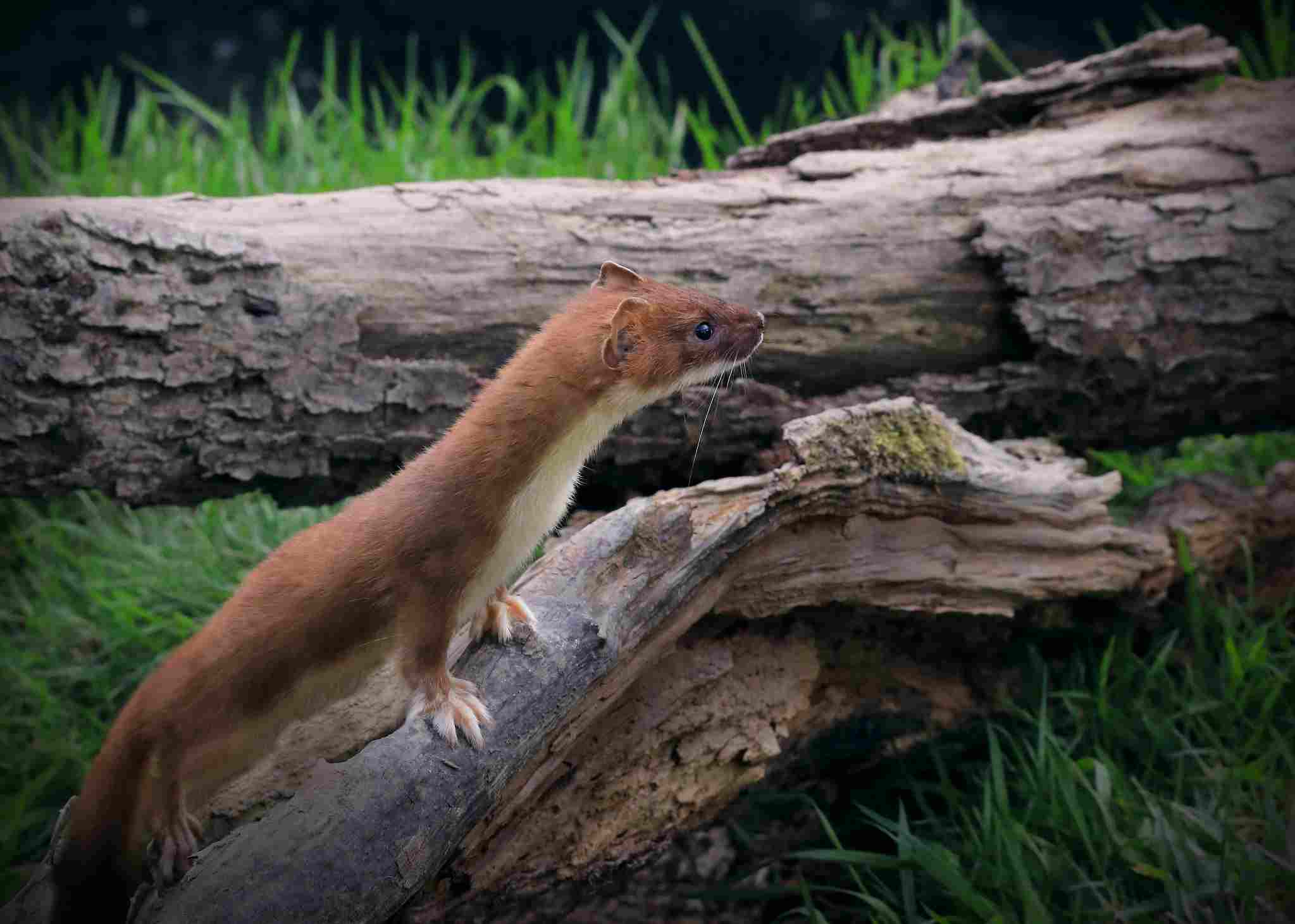
Weasel:
Typically has a slender, elongated body with short legs.
Fur color varies among species, often brown with a white underbelly.
Tail is relatively short compared to the body.
Stoat:
Exhibits a similar slender body, but slightly larger than most weasels.
During winter, stoats in colder regions develop a white coat with a black-tipped tail.
Undergoes a seasonal color change, adapting to its surroundings.
Comparison: Weasels and stoats share a similar body structure, but stoats undergo a seasonal color change for camouflage, while weasels maintain a more consistent fur color.
Ecological Implications:
Camouflage in stoats aids in hunting during snowy conditions.
Weasels’ uniform coloration may provide advantages in different habitats.
3. Size
Weasel:
Generally smaller, with a length ranging from 5 to 10 inches (13 to 26 cm).
Stoat:
Larger, with a length ranging from 6 to 12 inches (15 to 30 cm).
Comparison: Stoats are typically larger than weasels, exhibiting a size variation within their species.
Ecological Implications:
Size differences may influence prey selection and competition with other predators in the ecosystem.
4. Weight
Weasel:
Weighs between 1 to 8 ounces (28 to 227 grams), depending on the species.
Stoat:
Weighs between 2 to 16 ounces (57 to 454 grams).
Comparison: Stoats are generally heavier than weasels, displaying a wider weight range.
Ecological Implications:
Varied weights may impact the energy requirements, hunting strategies, and ecological roles of these species.
5. Bite Force (PSI)
Weasel:
Possesses a bite force ranging from 120 to 450 PSI.
Stoat:
Exhibits a similar bite force, ranging from 120 to 450 PSI.
Comparison: Weasels and stoats have comparable bite forces, suggesting similar predatory capabilities.
Ecological Implications:
The powerful bite is crucial for subduing prey, highlighting their roles as efficient predators in the ecosystem.
6. Physical Offensive Advantages
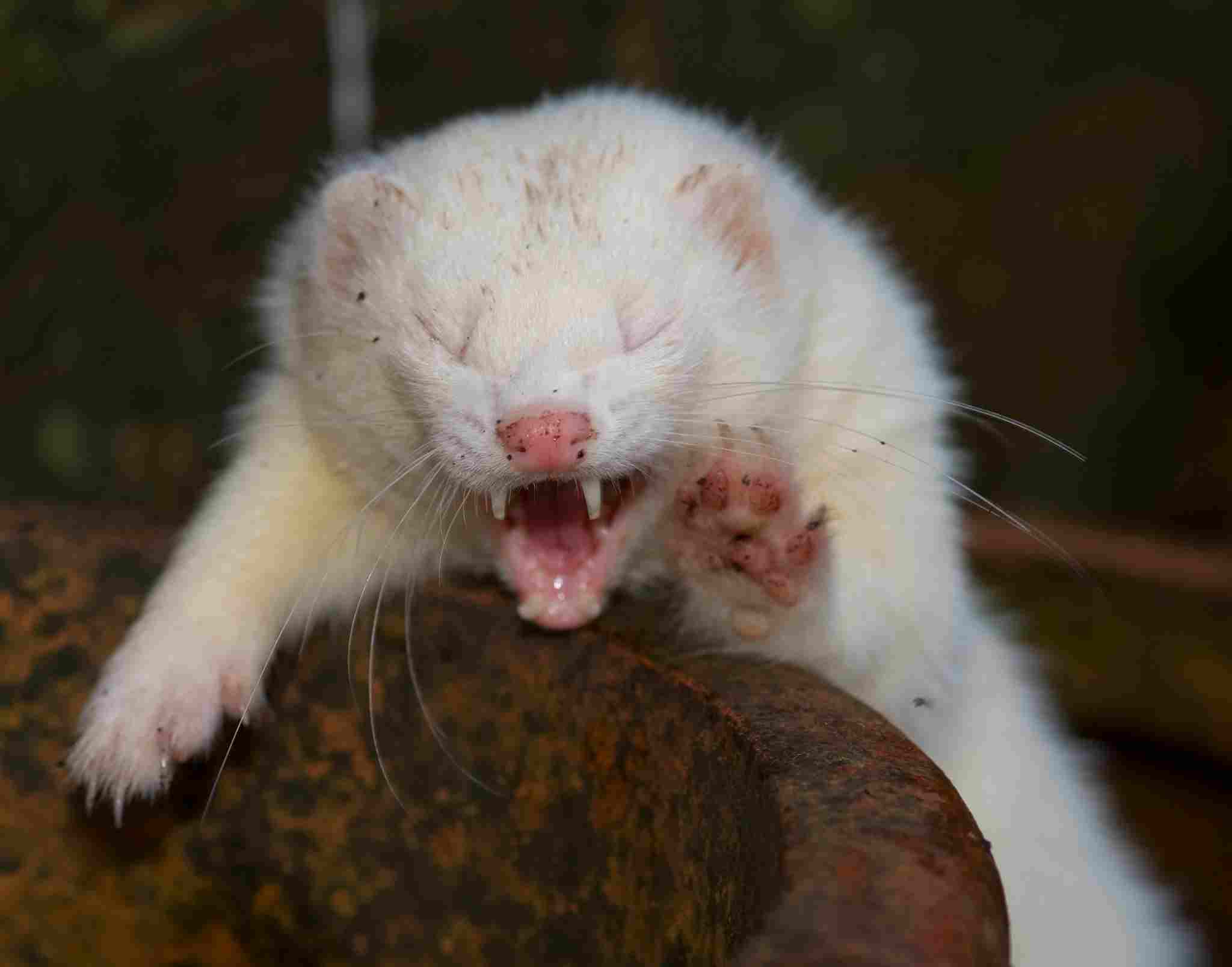
Weasel:
Agile and able to access small burrows, making it effective at pursuing prey.
Sharp claws and teeth contribute to successful hunting.
Stoat:
Possesses a similar agility, utilizing a slender body to navigate various terrains.
Sharp claws and a strong bite aid in capturing prey.
Comparison: Both weasels and stoats share physical offensive advantages, relying on agility and sharp anatomical features for successful hunting.
Ecological Implications:
Adaptations for offensive capabilities enhance their efficiency as predators in different environments.
7. Physical Defensive Advantages
Weasel:
Limited defensive adaptations, relies more on agility and evasion.
Stoat:
Can display aggressive behavior when threatened, including arching its back and hissing.
May use its size advantage as a deterrent against potential predators.
Comparison: Stoats exhibit more overt defensive behaviors compared to weasels, which tend to rely on evasion.
Ecological Implications:
Differences in defensive strategies may affect the interactions of these species with other predators in their ecosystems.
8. Speed (Km/hour or Mile/hour)
Weasel:
Capable of reaching speeds up to 12 miles per hour (19 km/h).
Stoat:
Exhibits impressive speed, reaching up to 15 miles per hour (24 km/h).
Comparison: Stoats generally display slightly higher speeds than weasels.
Ecological Implications:
Varied speeds might influence hunting success, evasion of predators, and overall ecological interactions.
9. Agility
Weasel:
Highly agile, capable of making quick turns and navigating tight spaces.
Stoat:
Extremely agile, utilizing its slender body to move with precision and speed.
Comparison: Weasels and stoats share remarkable agility, a crucial trait for successful hunting and evasion.
Ecological Implications:
Enhanced agility contributes to their ability to exploit various habitats and catch elusive prey.
10. Overall Physical Capacity
Weasel:
Exhibits a well-balanced combination of agility, speed, and offensive capabilities.
Relies on its adaptability to diverse environments for survival.
Stoat:
Possesses a robust physical capacity, excelling in agility, speed, and hunting prowess.
Comparison: Weasels and stoats both showcase strong overall physical capacities, adapting to their ecological niches effectively.
Ecological Implications:
The combination of physical traits contributes to their roles as successful predators within their respective ecosystems.
11. Habitat Preference(s)
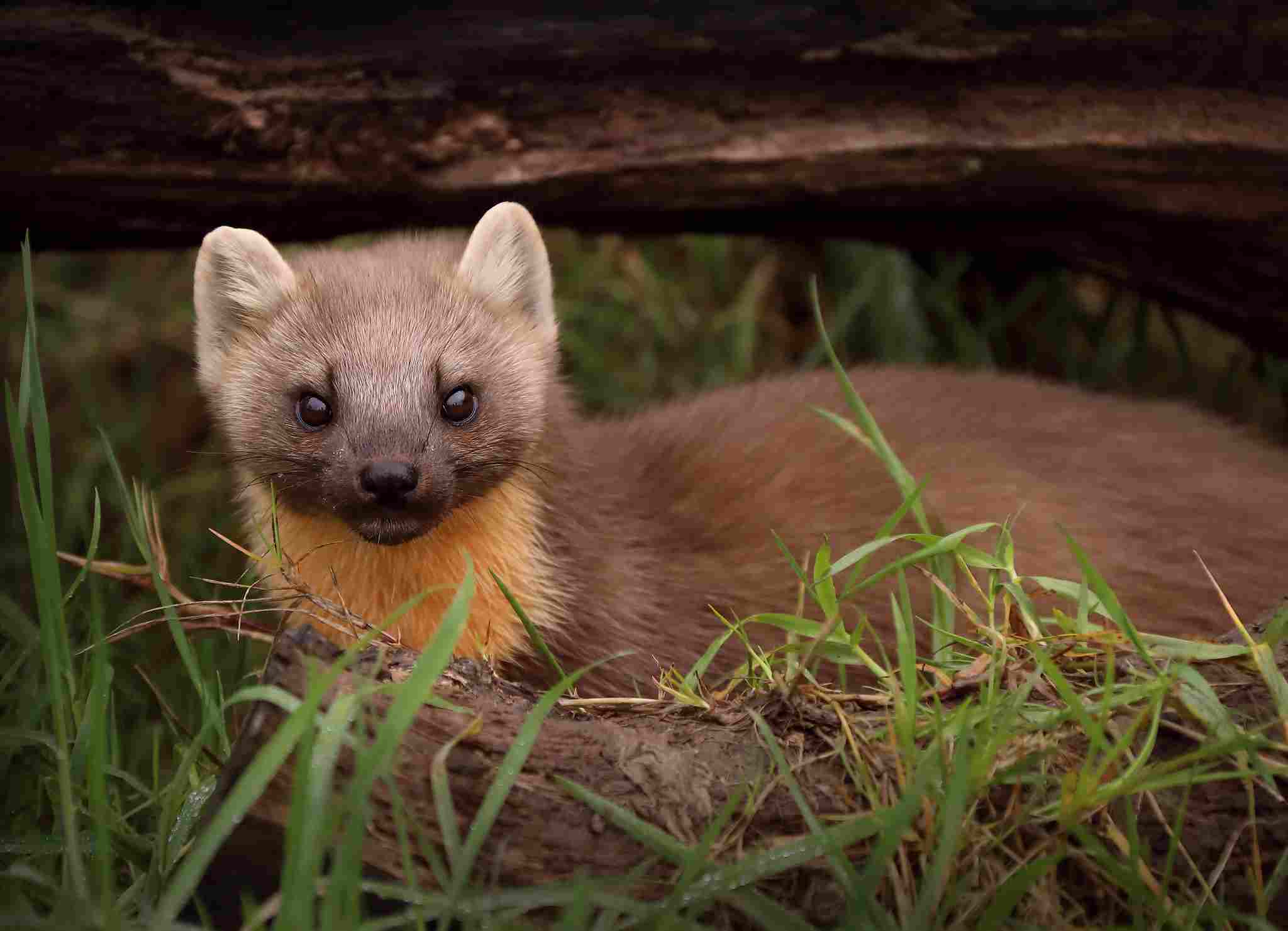
Weasel:
Adaptable to various habitats, including grasslands, woodlands, and urban areas.
Stoat:
Thrives in diverse environments, ranging from forests to tundra, adapting to seasonal changes.
Comparison: Weasels and stoats exhibit versatility in habitat preferences, showcasing adaptability to a wide range of ecosystems.
Ecological Implications:
Their ability to inhabit diverse environments enhances their ecological impact and contribution to ecosystem dynamics.
12. Tracks
Weasel:
Leaves small, delicate tracks with distinct claw marks.
Stoat:
Similar tracks to weasels, displaying a slender pattern with noticeable claw imprints.
Comparison: Both weasels and stoats leave similar tracks due to their shared physical characteristics.
Ecological Implications:
Tracking these species in the wild can provide valuable insights into their presence and behavior within ecosystems.
13. Lifespan
Weasel:
Typically lives 1 to 2 years in the wild.
Stoat:
Has a longer lifespan, often reaching up to 6 years in favorable conditions.
Comparison: Stoats generally have a longer lifespan compared to weasels.
Ecological Implications:
Differences in lifespan may influence population dynamics and ecological roles within their respective ecosystems.
14. Mode of Feeding
Weasel:
Carnivorous diet, primarily preying on small mammals, birds, and insects.
Known for its ability to kill prey larger than itself.
Stoat:
Carnivorous as well, preying on rodents, rabbits, and birds.
Displays a hunting technique known as the “weasel war dance” to confuse and subdue prey.
Comparison: Both weasels and stoats share a carnivorous diet, specializing in hunting small to medium-sized prey.
Ecological Implications:
Their predation on various species contributes to regulating prey populations in ecosystems.
15. Intelligence
Weasel:
Displays a level of intelligence in hunting strategies and adapting to different environments.
Stoat:
Exhibits problem-solving skills, using various techniques to catch prey.
Comparison: Weasels and stoats demonstrate intelligence in hunting and adapting to environmental challenges.
Ecological Implications:
Cognitive abilities contribute to their success as predators, enabling them to exploit diverse habitats.
16. Social Behavior
Weasel:
Generally solitary animals, with limited social interactions outside of the breeding season.
Stoat:
Displays both solitary and social behaviors, especially during the breeding season.
Comparison: Stoats exhibit more social behavior, particularly during certain phases of their life cycle, compared to the more solitary weasels.
Ecological Implications:
Differences in social behavior may influence population dynamics and interactions within their ecosystems.
17. Mode of Reproduction
Weasel:
Typically gives birth to a litter of 4 to 6 kits after a short gestation period.
Stoat:
Undergoes delayed implantation, with a longer gestation period, giving birth to a larger litter of 6 to 12 kits.
Comparison: Stoats have a more extended gestation period and larger litters compared to weasels.
Ecological Implications:
Reproductive strategies influence population dynamics and contribute to the overall reproductive success of these species.
18. Parental Behavior
Weasel:
Limited parental care, with the mother providing initial protection and nursing for a few weeks.
Stoat:
Displays more extended parental care, with the mother providing guidance and protection for a more extended period.
Comparison: Stoats exhibit more comprehensive parental behavior compared to weasels, involving prolonged care for their offspring.
Ecological Implications:
Variances in parental behavior may impact the survival rates of offspring and contribute to population dynamics.
19. Proximity to Human-Inhabited Areas
Weasel:
Adaptable to human-altered landscapes, occasionally found in gardens and fields.
Stoat:
Can be found in a variety of environments, including agricultural areas and suburban landscapes.
Comparison: Weasels and stoats both demonstrate a degree of adaptability to human-inhabited areas.
Ecological Implications:
Their ability to coexist with humans may influence local ecosystems and human-wildlife interactions.
20. Behavior Toward Humans
Weasel:
Generally avoids direct interaction with humans but may be curious.
Stoat:
Can display defensive behaviors if approached, including hissing and arching its back.
Comparison: Stoats may exhibit more overt defensive behaviors when encountering humans compared to weasels.
Ecological Implications:
Understanding their behavior toward humans is crucial for minimizing potential conflicts in shared habitats.
21. Danger Posed to Humans
Weasel:
Typically poses minimal danger to humans due to its small size and elusive nature.
Stoat:
Generally poses low danger, but defensive behaviors can lead to bites if cornered or threatened.
Comparison: Both weasels and stoats pose minimal danger to humans under normal circumstances.
Ecological Implications:
Awareness of their behavior helps mitigate potential risks, ensuring coexistence in shared environments.
22. Associated Precautions
Weasel:
Precautions involve securing food sources to prevent attraction and potential conflicts.
Avoiding attempts to handle or corner weasels is advisable to minimize stress.
Comparison: Similar precautions apply to both weasels and stoats, focusing on minimizing interactions and securing potential attractants.
Ecological Implications:
Human precautions contribute to the conservation of these species by reducing negative encounters and ensuring their well-being.
23. Conservation Status
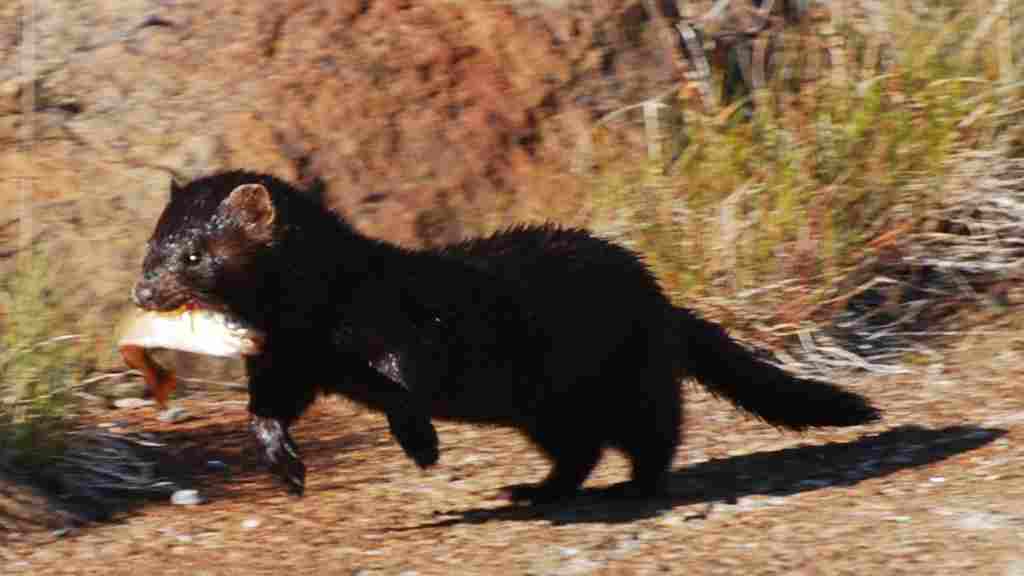
Weasel:
The conservation status varies among species, with some considered of least concern.
Stoat:
Conservation status varies globally, with some populations facing threats, including habitat loss.
Comparison: Conservation statuses differ among weasel species, and stoats may face specific threats impacting their populations.
Ecological Implications:
Understanding the conservation status helps implement targeted conservation measures to ensure the survival of these species.
Comparison Summary
Taxonomy:
Both belong to the Mustelidae family and Mustela genus.
Appearance:
Both exhibit slender bodies, with stoats undergoing seasonal color changes.
Size:
Stoats are generally larger than weasels.
Weight:
Stoats are generally heavier, with a wider weight range.
Bite Force (PSI):
Similar bite forces, ranging from 120 to 450 PSI.
Physical Offensive Advantages:
Both rely on agility, sharp claws, and teeth for hunting.
Physical Defensive Advantages:
Stoats exhibit more overt defensive behaviors.
Speed:
Stoats generally display slightly higher speeds.
Agility:
Both exhibit remarkable agility crucial for hunting and evasion.
Overall Physical Capacity:
Both demonstrate strong overall physical capacities.
Habitat Preference(s):
Both are adaptable to diverse environments.
Tracks:
Leave similar tracks with distinctive claw imprints.
Lifespan:
Stoats generally have a longer lifespan.
Mode of Feeding:
Both are carnivorous, specializing in small to medium-sized prey.
Intelligence:
Both demonstrate intelligence in hunting and adaptation.
Social Behavior:
Stoats exhibit more social behavior during certain phases.
Mode of Reproduction:
Stoats have a more extended gestation period and larger litters.
Parental Behavior:
Stoats display more extended parental care.
Proximity to Human-Inhabited Areas:
Both show adaptability to human-inhabited areas.
Behavior Toward Humans:
Stoats may exhibit more overt defensive behaviors.
Danger Posed to Humans:
Both pose minimal danger under normal circumstances.
Associated Precautions:
Similar precautions apply to minimize interactions and secure attractants.
Conservation Status:
Conservation statuses vary among species, with some facing threats.
Conclusion
I. Similarities:
Both weasels and stoats belong to the Mustelidae family and Mustela genus.
They share carnivorous diets, exhibit agility, and possess similar physical characteristics.
II. Differences:
– Stoats are generally larger with a more extended lifespan compared to weasels. – Stoats exhibit more social behavior, extended parental care, and a different reproductive strategy. – Weasels may have a more uniform fur color, while stoats undergo seasonal color changes.



